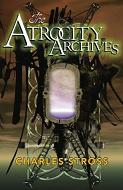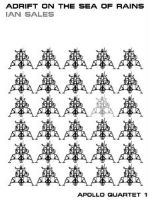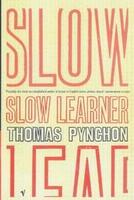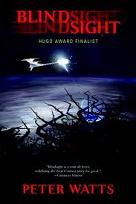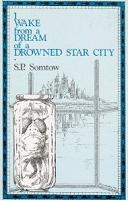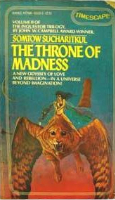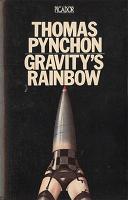 The first thing which catches you when you approach this book is not the title, but its tagline: Robot Arms, Cowboy Spacemen, and My 90 Days with the Phoenix Mars Mission. And whilst this sounds lurid and OTT I can assure you this book is non-fiction, and that this must all be true (and yes, of course it is!).
The first thing which catches you when you approach this book is not the title, but its tagline: Robot Arms, Cowboy Spacemen, and My 90 Days with the Phoenix Mars Mission. And whilst this sounds lurid and OTT I can assure you this book is non-fiction, and that this must all be true (and yes, of course it is!).
Andrew Kessler, the author of this unusual tome, is a writer with a degree in mathematics, is an entrepreneur (his book-event start-up ran into legal issues with its founders) who won - as a non-space-geek! - the space geek lottery and was invited to join and follow the Phoenix Lander Science Mission from within the Science Operations Center. I mean, spending 90 days exploring the Martian Arctic? I know a number of people who would have given their right arm to do so…
Martian Summer is the the record of said summer spent on Mars (remote operations only), providing an outsiders view of the workings of such a mission, the scientists and engineers involved, and the discoveries they made before the Martian Winter set in.
Phoenix was launched in August 2007, landed on Mars in May 2008, and sent its last message on November 10 of that year (it reported “Triumph” as the engineers put it into sleep mode for the Martian Winter - which it did not survive). Its name was very much program - it was built, on the double quick, from the canceled Mars Surveyor Lander, using instruments from both that and the (unsuccessful) Mars Polar Lander mission, amongst others.
It was the first such mission led by a University and thus outside NASA (although they paid for a lot of it, and kept rather a lot of control, too - more on that below!).
The main investigator for the Science phase was Peter Smith from the University of Arizona, Tucson, who hired Andrew to document the mission and relate it, in layman's terms, to the outside world. Andrew calls him, at least initially, a Martian Photographer, because Peter built the cameras for the Pathfinder mission (and for Phoenix, of course), and is the man who contrived to upload the Pathfinder pictures onto the Internet. This was in pre-Google times, but went what we would call ‘viral’ now - there were more than 100 million hits on the NASA server from people who wanted to see, to know, to be part of this - obviously totally overloading and crashing the server. It had a huge impact - all of a sudden NASA was riding on a wave of support, for the first time in a long while. And now he found a new way of spreading the word of what the scientists and engineers are doing behind their closed doors to the world.
Andrew’s account is headed by Sols - these are Martian Days, each of them 40 minutes longer than ours; the mission is counted by them, as there are only so many Sols for science until the Martian Winter. There is quite a lot of focus on this - it obviously pulls the mission timetable away from the rhythm the rest of the world moves in - and occasionally the world with its time scales intrudes in the shape of press conferences, or contacts with NASA and/or JPL. What was completely new to me was how impactive such a change in day length is on the humans, though - my initial reaction was that 40 minutes more time per day would be great (I would use them as 40 minutes more sleep, natch). But. Apparently this completely messes with your circadian rhythm, you are constantly jet-lagged, until it throws out your endocrine system in the longer run. Firstly this puts the urban myth that we are Martians of origin as a slightly longer day is natural for us to bed. But more importantly this raises huge questions for any manned mission to Mars, or, even worse, settlement. Would everybody have to live on Earth time, and ignore the Sols? There is a wonderful quip of what it does to you and your ability to function and perform, and keeping track of the two ever-divergent time lines: “It’s some kind of space-heimers”.
There are rumination of NASA/space exploration politics, of Dan Goldin’s (NASA Administrator) FCB (Faster Cheaper Better) programme and its downfall - especially around the failed Mars Missions. There are political/legislative headaches and complications due to ITAR, the International Trade in Arms Regulations, and the Foreign Nationals (gasp!) working on the science mission - who is allowed to know what, who has access to which systems and mailing lists, which data is made available to whom… it really does not help the operations!
And then crunch time comes, with a bigger than usual technical problem and the potential early end to the mission - leading to political interference, top-down rules imposed from Mission Control clearly showing how much of a ‘Science-led Mission’ this is (not, as soon as prestige and spin are affected) - this bit reads like a thriller. There are substantial amounts of bad feeling re. the NASA interference - we’re getting talks of Overlords, Minders, Enforcers, NASA Heavies - I kept waiting for the Political Officer simile to pop up, but either Andrew abstained, or his Editor wisely put his/her foot down…
Overall I found this an enjoyable and very interesting book, and I would expect this to be the case for anyone interested in space exploration, or the working of such complicated projects.
Andrew had, as hinted at above, no real ‘space’ background to speak of. It makes this book all the more charming, as he learns and discovers about what the scientists learn and discover - and he does not take himself all too seriously doing so, which is refreshing. And, telling form this Twitter feed, space has not let him go since!
He is reasonably wooly of how he ended up in this position. Yes, Peter wanted someone, an outsider, to join the mission, and articulate this amazing story, with the aim to “inspire children and adults alike”. He wanted not a scientist, but someone without prior baggage or much knowledge, to write from a new perspective. And thus Andrew “won the space nerd lottery” (his words), even if there wasn’t one. But how did Peter come to pick this writer with a math degree? Not all the story is told here…
What is being told, though, is the story of the mission - full of insights into how such a complex and expensive endeavor is run, resplendent with stories of human foibles, with highly intelligent specialists, scientists, individualists pulling together as a team; the dynamics whilst operating under pressure (and on Mars time!) really bring the story to life.
More Andrew Kessler
Title: Martian Summer
Title: Robot Arms, Cowboy Spacemen, and My 90 Days with the Phoenix Mars Mission
Author: Andrew Kessler
Reviewer: Markus
Reviewer URL: http://thierstein.net
Publisher: Pegasus Books
Publisher URL: http://www.pegasusbooks.us
Publication Date: 2011
Review Date: 150208
ISBN:9781605983462
Price: USD 16.95
Pages: 342
Format: Trade Paperback
Topic: Space Exploration
Topic: Non-fiction

